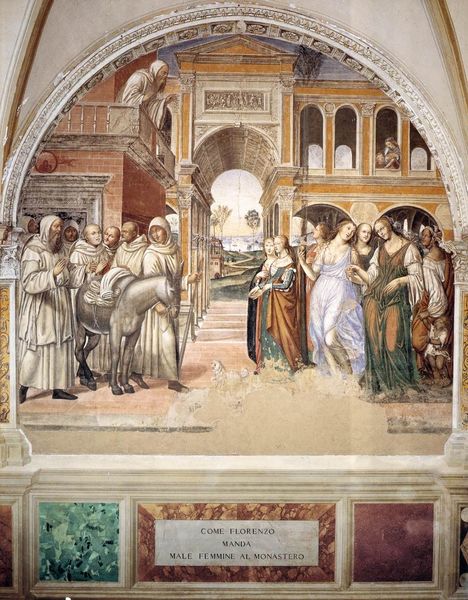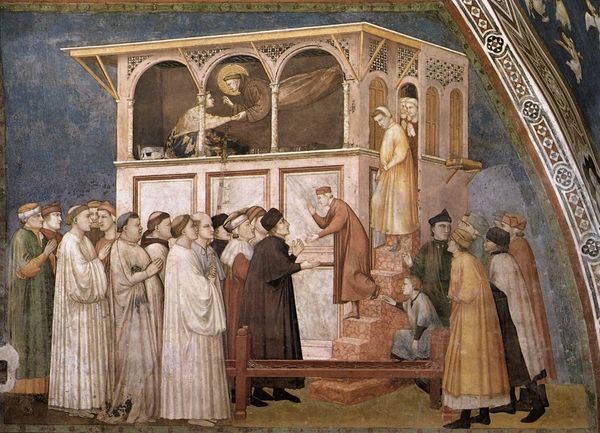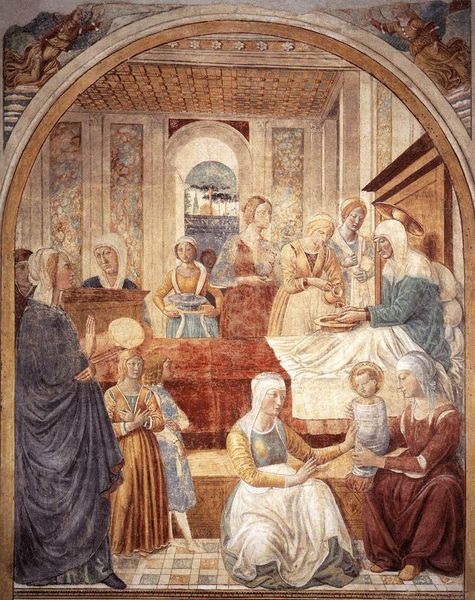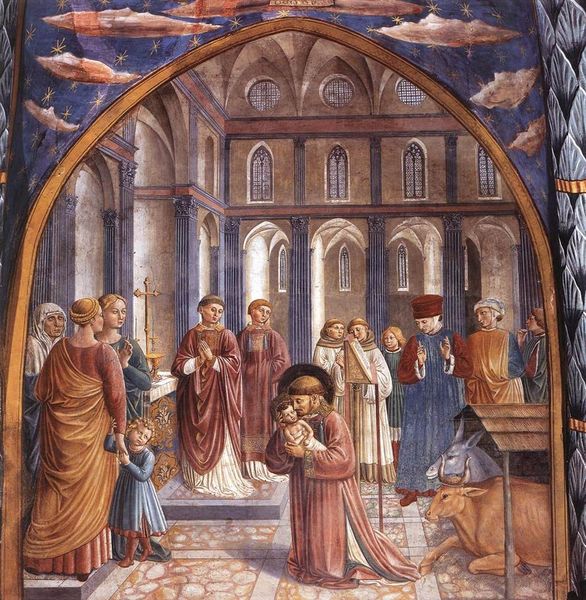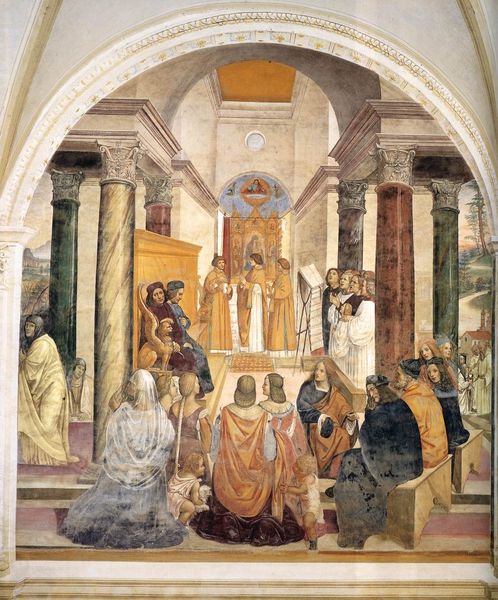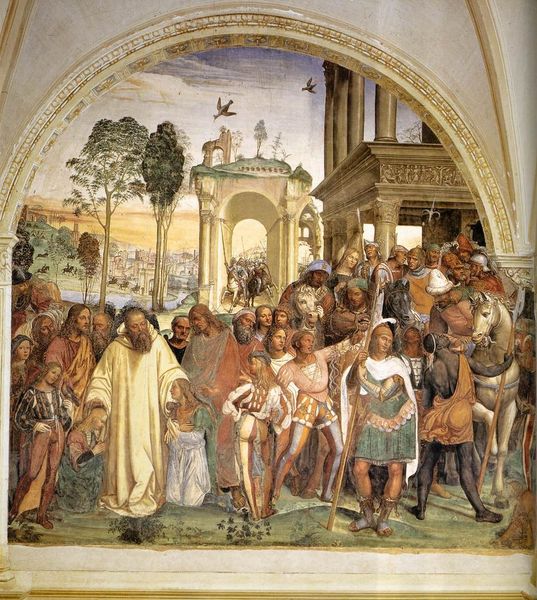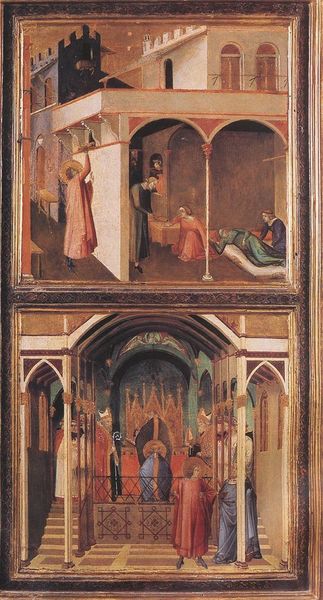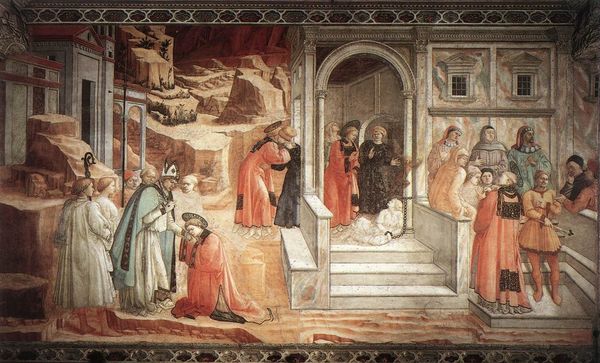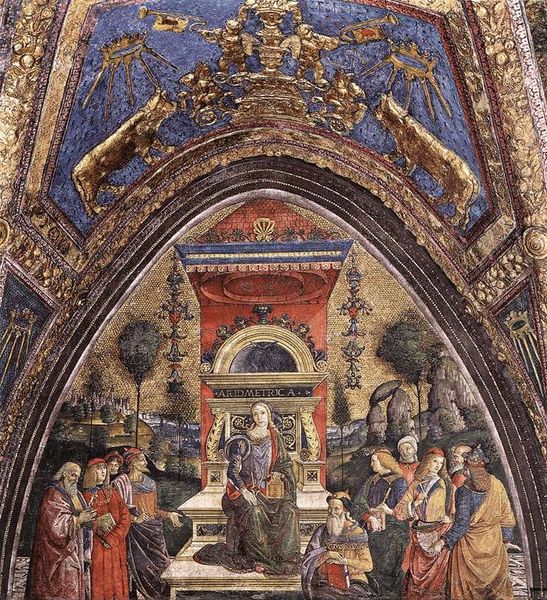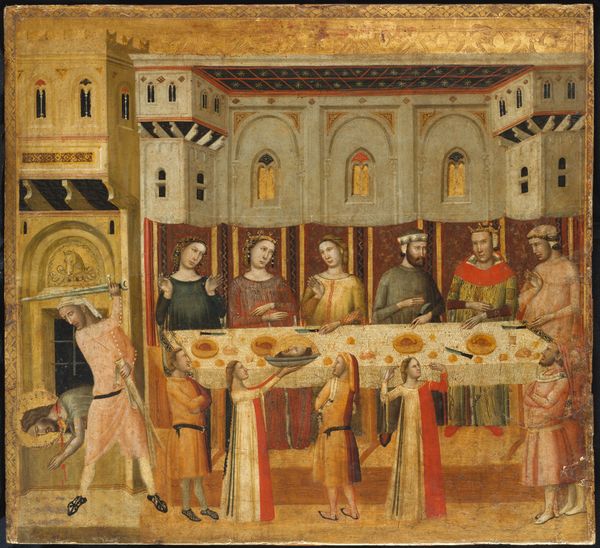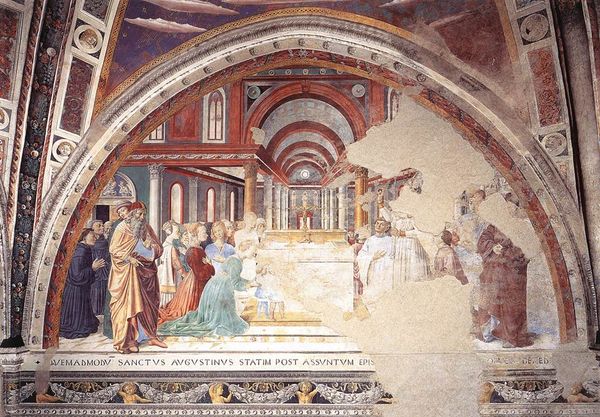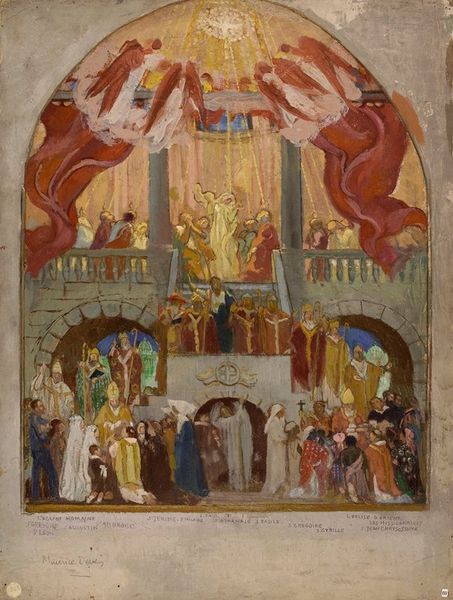
painting, textile, fresco
#
medieval
#
narrative-art
#
painting
#
sienese-school
#
textile
#
holy-places
#
figuration
#
fresco
#
oil painting
#
history-painting
Copyright: Public domain
Curator: Ambrogio Lorenzetti painted this fresco, "Martyrdom of the Franciscans", around 1327. Editor: There's such an intense sense of power and suffering concentrated in this one space. The icy blues and earth tones contribute to a feeling of stark oppression. Who are we looking at, exactly, and why are they suffering? Curator: This work depicts the execution of Franciscan missionaries in India, illustrating a story from Franciscan chronicles used as a model for preachers. Consider the actual material: it's a fresco, pigment applied directly to the wet plaster wall, integrating painting with architecture. Imagine the communal labor required for a project of this scale. Editor: Absolutely. And that labor underscores the religious narrative. It implicates all involved, viewer included. Power sits elevated; those who yield that power appear unemotional. Look how they’re actively oppressing another group simply due to differences in identity and beliefs, an unfortunate phenomenon that carries relevance into contemporary times. Curator: Note how Lorenzetti depicted luxurious fabrics worn by the central figure and his court versus the simple habits of the Franciscans. This use of material signifies hierarchy but also speaks to the economy around devotional objects and attire during this period. The craftsmanship underscores how material excess becomes associated with worldly authority. Editor: A good point. I think also about how Lorenzetti uses textiles symbolically – the opulence on one side signifying power and the Franciscans in simpler clothing signaling piety and the rejection of material goods as a sign of their devotion. It begs questions about the distribution of wealth and resources and what social and spiritual priorities were valued. Curator: Viewing it with that in mind brings a much sharper meaning to the painting. Considering what went into the work gives us a valuable peek into the values it sought to perpetuate. Editor: I agree. By examining both the form and the broader implications of such power dynamics, we have much more context for viewing historical violence today.
Comments
No comments
Be the first to comment and join the conversation on the ultimate creative platform.
